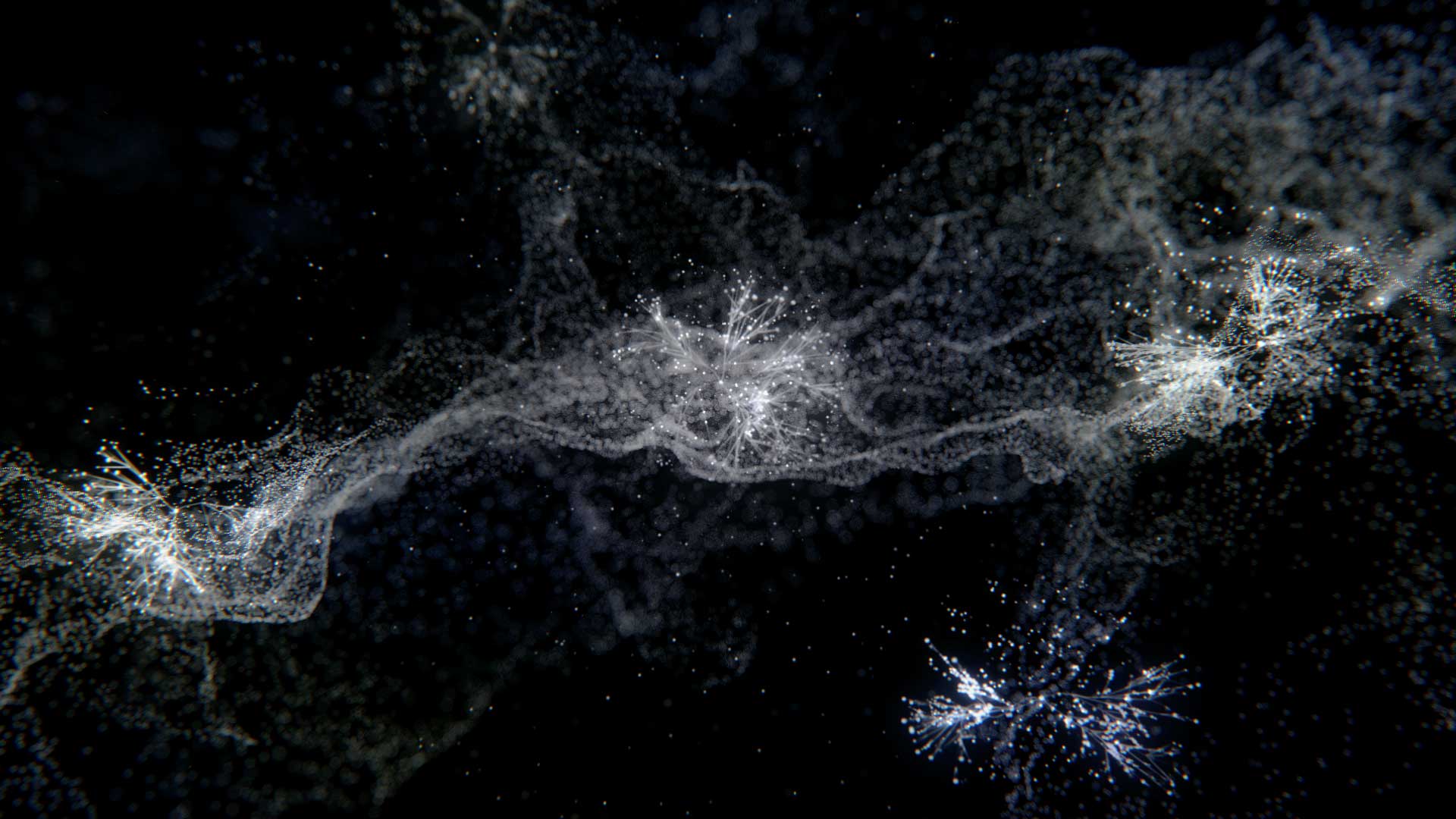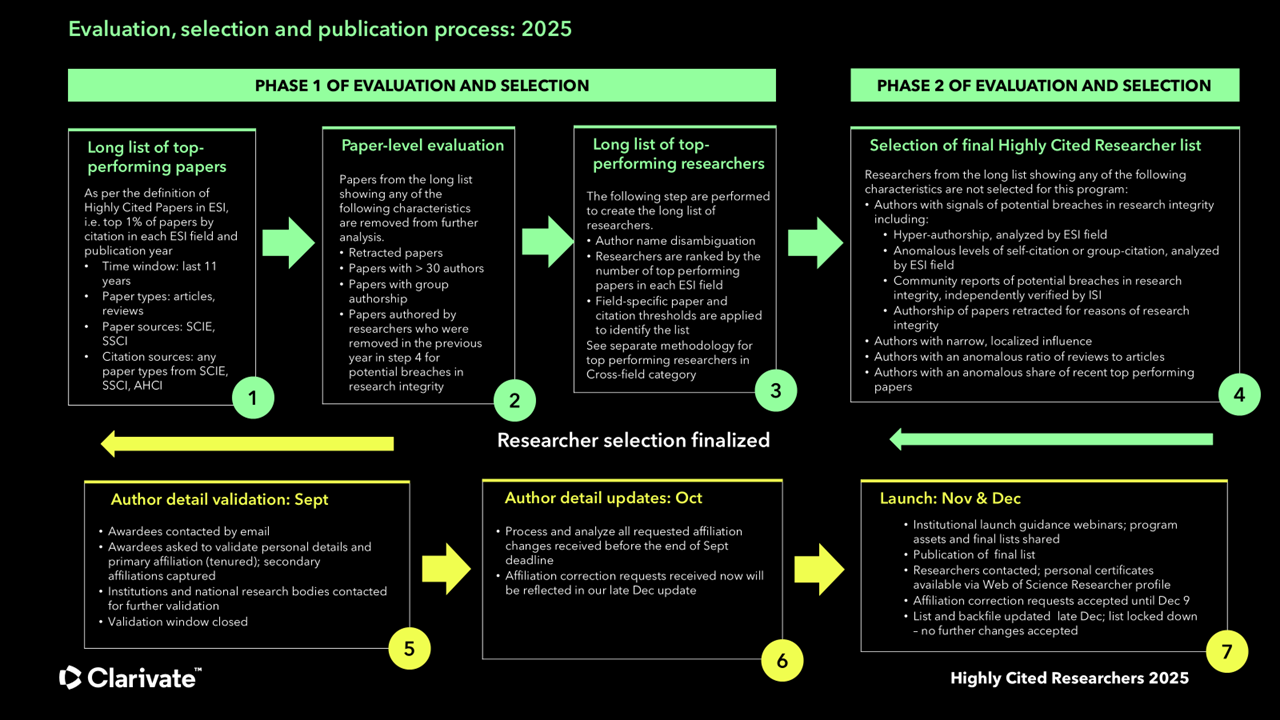Celebrating excellence, elevating integrity standards: Changes to Highly Cited Researchers process

Each year, the Highly Cited Researchers program from Clarivate highlights the world’s most influential scientists and social scientists — those whose published work ranks in the top 1% by citations for their field and year. These individuals represent the pinnacle of scholarly impact, shaping the direction of research across disciplines and geographies; high citation counts alone are insufficient to be named a Highly Cited Researcher.
Beyond metrics and recognition, the HCR program is grounded in a deeper commitment: upholding the integrity of research. In an era when the credibility of scientific output faces increasing scrutiny, the Institute for Scientific Information’s (ISI) rigorous selection process ensures that recognition is not just about volume or visibility, but about trust.
It’s our priority to openly share the details of our evaluation and selection process with the research community. By publishing our methodology and providing FAQs, we help researchers, institutions, and stakeholders understand the meaning and nature of the list, including how Highly Cited Researchers are selected.
Methodology matters: Strengthening the foundations of the Highly Cited Researchers program
Over the last decade, the Highly Cited Researchers program has continuously evolved to integrate robust checks to safeguard against hyper-authorship, excessive self-citation and/or citation manipulation, including unusual collaborative citation patterns, as well as taking steps to exclude retracted content from our analysis.
Each year, we have included additional layers of scrutiny, as the list is designed to meet the needs of the community by honoring individual achievement while reinforcing the values that underpin meaningful and responsible research.
At the heart of the program is a commitment to identifying individuals whose work has had a genuine, community-wide influence on their fields. Citation counts form a part of the initial selection process, but the broader selection process is designed to spotlight researchers who exemplify excellence in their research as well as integrity in their publication and citation practices.
Figure 1. shows an overview of our evaluation and selection process.
In 2025, we introduced two improvements:
- Improved filtering of papers (Fig. 1: Phase 1, Step 2)
Our selection process starts with the identification of Highly Cited Papers. This year, ISI analysts removed Highly Cited Papers authored by individuals excluded from the 2024 list due to concerns around research integrity.
The removal of these papers ensures that the influence of questionable citation and publication practices do not obscure the contributions of others. It allows deserving researchers — whose work may have been previously overshadowed — to be recognized.
- Enhanced systematic evaluation (Fig. 1: Phase 2)
The second improvement focused on applying existing selection criteria more comprehensively and consistently during Phase 2. By reducing reliance on manual inspection and increasing algorithmic analysis, ISI introduced a more objective and scalable review of candidates. While the criteria themselves remain unchanged, their application is now more robust. Human qualitative evaluation remains an important part of our selection process.
What the research community can expect: A new standard for recognition
The impact of our improved methodology is spread globally and across all categories. Among 21 Essential Science Indicators (ESI) categories represented last year, 12 decreased in the number of awards. Most of these are categories related to Life Sciences & Medicine, followed by Natural Sciences.
Overall, we have seen a modest increase in the overall size of the list compared to last year and little change in the top-performing countries/regions. Around 70% of Highly Cited Researchers 2023 retained their status in 2024. This year, the global retention rate has dropped to 60%. The absence of prior Highly Cited Researchers on this year’s list is counter-balanced by the inclusion of many new names.
Recognition for overlooked contributors
By removing papers that distorted citation and publication landscapes, we have made space for researchers whose work may have been previously overlooked. This opens the door for more diverse representation across disciplines, institutions, and regions — especially for those whose influence is truly community-wide.
A dynamic and evolving benchmark
The annual refresh of the Highly Cited Researchers list, based on an 11-year rolling window, means that inclusion is never guaranteed. Researchers should view the list not as a permanent recognition, but as a reflection of sustained, high-quality impact at a given point in time, which is responsive to the changing nature of scholarly communication.
It is also worth explicitly noting that exclusion from the list does not necessarily signal a concern over research integrity. It may, for example, indicate that a researcher’s citation network is not sufficiently broad or diverse, and does not have a truly global impact.
Join the conversation
As Clarivate continues to refine the Highly Cited Researcher program, input from the global research community remains essential. These changes are designed not only to uphold the highest standards of integrity but also to reflect the values and realities of those who contribute to the advancement of knowledge.
We invite researchers, institutions, and other stakeholders to engage with us at isi@clarivate.com to share feedback, ask questions, and help share the future of this program.
Together, we can ensure that recognition is earned through genuine impact.
**
The Highly Cited Researchers 2025 list will be released in November.
Read more about the Highly Cited Researcher program, and how our methodology has improved to support research integrity over the years:
Evolving the Highly Cited Researchers List (April 2025)
This blog outlines how Clarivate has adapted its Highly Cited Researchers methodology over time to promote fairness, accuracy, and integrity.
Key Trends 2014–2024 (June 2025)
Explore a decade of Highly Cited Researchers data through interactive dashboards and analysis.
A Scientific Elite: HCRs with Staying Power (June 2025)
This post offers insights into long-term impact and the stability of influence across disciplines and institutions.
Strengthening Research Integrity through Collaboration (February 2025)
A broader look at how Clarivate partners with the research community to uphold integrity across the scholarly ecosystem.
Learn more about Highly Cited Researchers.










